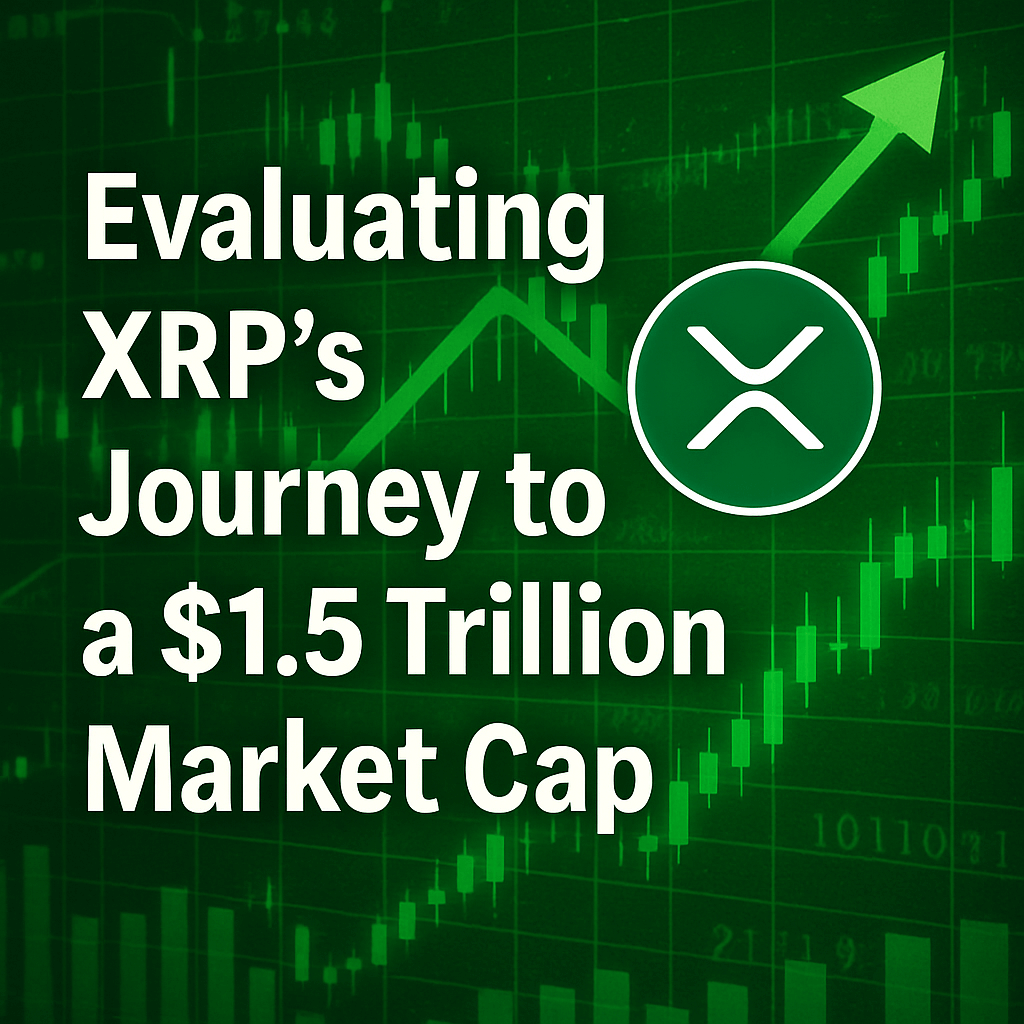Evaluating XRP’s Journey to a $1.5 Trillion Market Cap

As of today, XRP is trading at around $2.28, down in the past 24 hours, according to CoinMarketCap data. This article examines how XRP could potentially reach a $1.5 trillion market capitalization by combining technical analysis, on-chain metrics, regulatory developments, and macroeconomic factors.
Fibonacci Measured Moves and Price Targets
In a recent X post, crypto analyst Egrag Crypto outlined two Fibonacci measured-move approaches to project XRP’s future market cap. By analyzing the move from Fib 1.0 to Fib 1.618 in the previous cycle, the analyst identified four key milestones:
- Non-logarithmic Fib 1.618 target: $270 billion (approximately $4.60 per token)
- 242% rally from current cap: $450 billion (approximately $7.66 per token)
- Further 242% phase: $978 billion (approximately $16.65 per token)
- Logarithmic maximum target: $1.5 trillion (approximately $25.56 per token)
Logarithmic Versus Arithmetic Scaling
On a logarithmic price scale, percentage changes are represented proportionally, making multi-year parabolic rallies visually comparable. Egrag’s log-based measured move exceeds Fib 1.618 by roughly $500 billion, suggesting a steeper upside if XRP maintains its parabolic trajectory. Conversely, on a linear chart, the non-logarithmic Fib 1.618 level remains at $270 billion, depicting a more conservative path.
Yearly Candle Analysis: The ‘Candle 13’ Theory
Extending his analysis to the yearly chart, Egrag Crypto pointed to a recurring 800% gain between Candle 9 (the 2021 yearly candle) and a hypothetical Candle 13. By applying this historical gain to Candle 13, he derives a trading range of $13 to $22 per XRP, with wick extensions potentially reaching $27 within a 60-day window, aligning with the $1.5 trillion market cap target.
On-Chain Metrics and Network Fundamentals
Beyond pure technicals, on-chain metrics provide fundamental context:
- Average daily transactions on the XRP Ledger: ~4.2 million
- Token velocity: ~0.024 (indicating low speculative turnover)
- Active wallet addresses: up 15% year-to-date
- Escrowed XRP released by Ripple: 1 billion tokens monthly (over 40 billion remain locked)
These metrics from Santiment and Glassnode suggest a maturing network. Increased institutional reservation of XRP and pilot programs by banks like Santander and SBI Holdings reinforce potential demand.
Regulatory Clarity and Institutional Adoption
The outcome of the SEC vs. Ripple lawsuit is a key catalyst. Historical precedent shows that regulatory clarity can trigger significant inflows, as seen when Ethereum was deemed not a security. A favorable ruling could pave the way for ETFs and custodial services to include XRP, boosting market capitalization.
Macro Trends Impacting Altcoin Performance
With the next Bitcoin halving expected in April 2024, altcoins often enter an “altseason” 6–9 months post-halving. Coupled with potential Federal Reserve rate cuts, risk-on assets like cryptocurrencies could see amplified capital inflows. XRP, with its relatively low market cap ranking, may experience outsized gains if market sentiment shifts bullish.
Risk Factors and Market Sentiment
Key risks include:
- Regulatory setbacks: an adverse SEC ruling could suppress price action
- Market correlation: XRP often tracks Bitcoin’s movements, susceptible to macro volatility
- Competitive landscape: CBDC and stablecoin innovations may challenge XRP’s use case
- Escrow release schedule: monthly token releases could introduce selling pressure if offloaded
Sentiment data from CryptoQuant show declining exchange reserves for XRP—historically a bullish sign—though futures funding rates remain neutral.
Conclusion
Reaching a $1.5 trillion market cap—translating to over $25 per token—requires a confluence of strong technical performance, robust network fundamentals, regulatory clarity, and favorable macro conditions. Traders and investors should monitor Fibonacci extensions, yearly candle progress, key lawsuit milestones, and on-chain metrics to assess XRP’s potential trajectory.